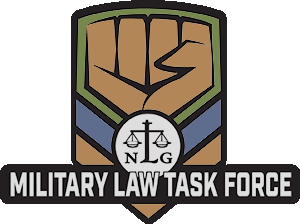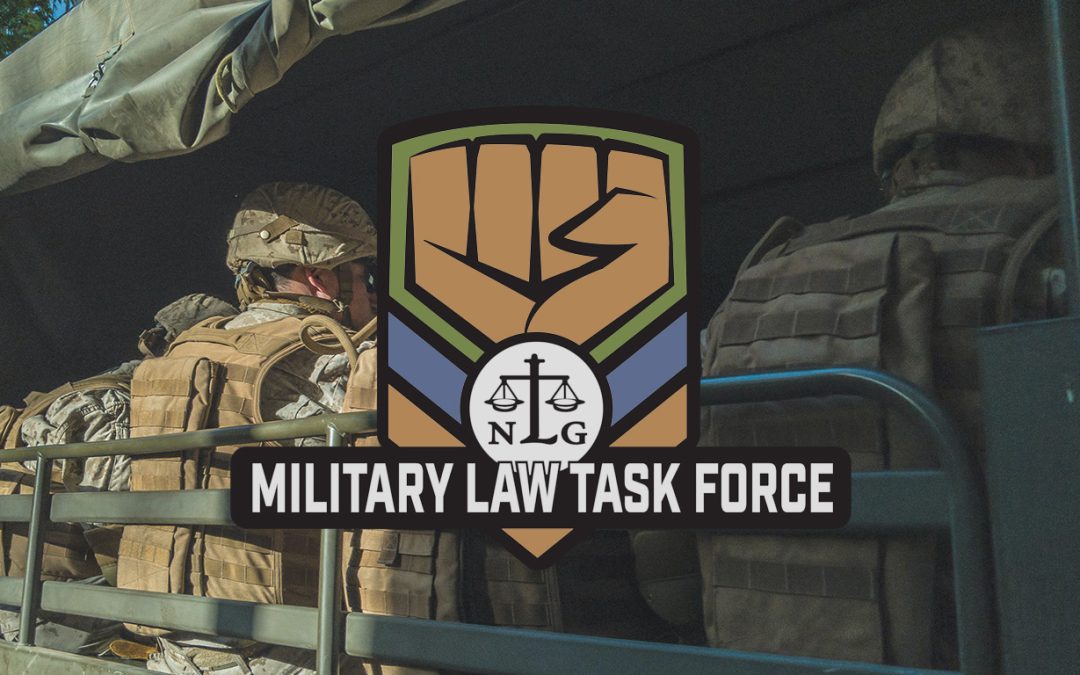By Kathleen Gilberd
The National Defense Authorization Act (NDAA) of 2021, passed on January 1 over President Trump’s veto, contains a number of important military personnel provisions, including those summarized below. The Act can be found at: Text – H.R.6395 – 116th Congress (2019-2020): National Defense Authorization Act for Fiscal Year 2021 | Congress.gov | Library of Congress. Its personnel provisions are heavy on studies and surveys, but also include some significant new policies. While the Department of Defense (DoD) was already engaged with some of these, and has taken action quickly on some others, it remains to be seen whether DoD will meet Congressional deadlines and how fully the new provisions will be implemented.
Diversity, Military Racism and White Supremacy
Section 503 of the NDAA requires diversity of membership in promotion selection boards for active duty and reserve personnel, as well as selection boards for education and command assignments, in order to represent “the diverse population of the armed force concerned to the extent practicable.”
Under Section 524, promotion selection boards will no longer be provided photographs of candidates for promotion in order to avoid bias. In addition, DoD is to provide Congress with a report on the utility of redacting or removing from selection board applications any information which might lead to “inappropriate bias;” the report will include an assessment of the effects of removing such information, and an implementation plan for doing so. The report must be provided to Congress within one year of enactment of the NDAA, and its plan must allow for implementation within two years of receipt of the report.
Section 370, one of the provisions prompting Trump’s veto, requires that DoD remove from its assets “all names, symbols, displays, monuments, and paraphernalia” that commemorate the confederacy or any person who served with it voluntarily. “Assets” include bases, installations, streets, building, facilities, aircrafts, ships or planes, weapons, monuments, and the like, though grave markers are specifically excluded.
In preparation for this, DoD is to set up a commission to assess whether or not names, symbols, etc., are commemorative and to recommend a plan and procedures for renaming or removing them. The commission is also required to develop “procedures and criteria for collecting and incorporating local sensitivities associated with naming or renaming assets…”, though the practical meaning of this provision is not made clear. The commission’s plan must be implemented within three years of enactment of the NDAA. Since this was enacted, the Secretary of Defense has appointed a four-person commission to begin the process.
Section 547 requires the Controller General to submit a report to Congress on DoD’s implementation of the recommendations made by the Government Accountability Office in its May 2019, report on racial disparities in the military justice system and related requirements in last year’s NDAA, and their effectiveness. Briefings on the status of the study are due by May 1, 2021.
Section 551 requires that the Secretary of Defense’s reports to Congress and the President will include reports from each service on the status of its diversity and inclusiveness. National Security reports will include a discussion of strategic goals related to diversity and inclusion, with assessment of efforts to reflect the diverse population of the US eligible to serve. The Secretary is to develop matrices to measure efforts to achieve such diversity across the ranks in each service and efforts to maintain a ready military force; to develop an analysis of bias and of barriers to diversity across the “military life cycle,” including enlistment and recruitment; and to provide reports with detailed information on service demographics by gender, race and ethnicity, including promotions, enlistment, service academy graduation, reenlistments, etc. These reports are to be made public 72 hours after they are provided to Congress.
This section also amends 10 USC 601 to promote diversity in officer selection for lieutenant general and general positions, requiring that all officers considered to be among the best qualified are considered. It requires reports on this issue from the Defense Board on Diversity and Inclusion in the Military and the temporary Defense Advisory Committee on Diversity and Inclusion in the Armed Forces.
Section 552 requires submission of Armed Forces Workplace and Gender Relations Surveys for both active and reserve components every two years. Armed Forces Workplace and Equal Opportunity Surveys will be conducted every four years. The Section allows the Secretary of Defense to postpone the surveys in case a war or national emergency declared by the President makes it impractical.
Under Section 553, questions regarding racist, anti-Semitic or supremacist activity are to be added to surveys required by the 2020 NDAA.
Section 554 requires DoD to appoint a Deputy Inspector General at the DoD IG’s office within 90 days of enactment, to conduct and supervise investigations of “policies, programs, systems, and processes” of the Defense Department to consider their effect on diversity and inclusion and to “prevent and respond to supremacist, extremist and criminal gang activity” by any military member. The DoD Deputy IG will coordinate with service IGs, who are required to cooperate in such investigations, The Secretary is to establish policies to ensure that prohibited racist, extremist and related activities are referred to the DoD IG’s office. The DoD Deputy IG will be able to track and monitor cases referred to military criminal investigative agencies such as CID, any other inspector general, military police or security police, commanding officers, civilian law enforcement or other agencies. He or she will document resulting actions from such investigations.
Annual and semi-annual reports to the IG and the Secretary of Defense will be required on the activities and conclusions of this IG, and will be made public. In addition, annual reports will be made to Congress, beginning on December 1, 2021.
Section 557 mandates that DoD will, in conjunction with an outside federally-funded research agency, evaluate and propose policies to eliminate barriers to minority participation in elite military units. These include Army Special Forces, Army Rangers, Navy SEALs, Air Force Combat Control Teams, Air Force Pararescue, Air Force Special Reconnaissance, Marine Raider Regiment, Marine Corps Force Reconnaissance, Coast Guard Maritime Security Response Team, other units designated by DoD as special operations forces, and all pilot and navigator MOSs. A study of current minority participation in these units, evaluation of barriers, and recommendations to improve participation was to be initiated within 30 days after the NDAA’s enactment. No later than March 1, 2023, DoD was to implement the study’s recommendations, with any delays requiring written notice and justification to Congress. If the SecDef decides not to implement any recommendation, he must provide justification to Congress and a summary of alternative actions to carry out the purpose of the recommendation.
Under Section 558, the Comptroller General will, within one year of enactment, submit to Congress a report on equal opportunity complaints at the military academies, the number substantiated, the results of any completed surveys during the last two years, an analysis of the data these provide, an assessment of whether the data shows trends in equal opportunity, and an assessment of whether the academies’ equal opportunity and related programs successfully address problems shown by the data.
Section 571 requires development of a mentorship and career counseling program for officers to improve diversity in leadership. Any officer may apply to this program, which allows one or more mentoring opportunities before selection of his or her branch, specialty and military community, and on-going mentorship and career counseling throughout his or her career. Mentoring will include information on careering pathways, officer promotion and retention rates, and “such other information as may be required to optimize the ability of an officer to make informed career decisions….” The program is added to 10 USC 656, Diversity in Military Leadership.
Section 913 establishes the position of a Chief Diversity Officer within DoD by adding to 10 USC a new section 147. The Officer is to provide DoD and the services with advice on policy and oversight of diversity and inclusion matters, develop a strategic plan with vision and goals for diversity within DoD, in the academies, and in recruitment of “untapped locations and underrepresented demographic groups,” among other tasks. Similarly, each military department is to appoint a Senior Advisor for Diversity and Inclusion, with similar responsibilities for the department.
Sexual Assault, Sexual Harassment and Related Misconduct
Under existing policy, servicemembers who have been sexually assaulted may request transfers away from their units. Section 531 of the Act extends the time for command decisions on such requests from 72 hours to five calendar days, effective on the date of the NDAA’s enactment.
Section 532 requires the Secretary of Defense to add to regulations a policy allowing confidential (anonymous) complaints of sexual harassment, to be made to a designated individual outside the complainant’s immediate chain of command. Officials charged with receiving such complaints are to advise the complainant about alternative methods of complaint and the possibility that the complaint could be investigated if it is not made anonymously. Anonymity will not be assured where the official finds that there is a “clear and present risk” of harm or danger from the harasser. DoD will be required to track anonymous complaints, and also to report to Congress on April 30, 2023, and every two years thereafter, about these complaints, without revealing any personal information about complainants. DoD will also prepare a plan for tracking serial harassers and allow confidential complainants to elect to reveal information about the complaint to assist in identifying serial harassers.
Section 534 adds new topics to the planned 2021 report from the Defense Advisory Committee for the Prevention of Sexual Misconduct. The report will discuss the utility of sexual assault prevention and response in leadership training, particularly for junior non-commissioned officers; assess the possibility of screening possible subjects and perpetrators of sexual assault and sexual harassment prior to enlistment; examine the value of using screening tests to assess recruits’ views on equal opportunity and whether those views are compatible with military service; assess the utility of exit interviews for personnel leaving the military to ask if they experienced or saw sexual assault or harassment and failed to report it, perhaps to be done in conjunction with the military’s “catch a serial offender” program; and consider whether the DoD’s sexual assault databases are sufficiently anonymous while still providing leadership with information on, among other things, the number of assaults involving abuse of authority.
Section 538 requires coordination among all the services and the VA of support for sexual trauma survivors. This will include annual training of sexual assault response coordinators (SARCs) and Victims’ Advocates on resources available through the VA, provision of such information on VA resources to survivors, and requirements for SARCs to connect survivors with VA Military Sexual Trauma Coordinators. The section also requires DoD and VA to report on the availability of residential treatment programs.
Under Section 539, the military service academies will promulgate regulations to facilitate separation of survivors from perpetrators, to the extent practicable, while allowing both to complete their courses of study without, for example, taking classes together. Survivors will have the ability to opt out of these provisions. The regulations must emphasize privacy of the parties, include provisions to prevent retaliation, and limit prejudice to either party so that they may finish their courses with minimal disruption.
Section 539A is intended to explore a “safe to report” policy to mitigate the problem of punishment of survivors for any collateral misconduct related to the assault (for example, illegal drinking in the barracks prior to an assault). Under existing policy, commands have discretion to postpone disciplinary action for such misconduct until the sexual assault case is concluded, but not to waive disciplinary action thereafter. While Section 539A requires DoD to establish regulations for such a policy, it does not indicate what the policy should be and whether some or all collateral misconduct might be waived. No time frame is given for the promulgation of regulations.
Section 539B requires DoD to establish a strategy for oversight of its sexual assault policy, including a framework for long-term goals of the policy, strategies to achieve the goals, and the like. The strategy must also hold leadership accountable for implementation of that strategy. As with 539A, specifics are largely missing from this Section.
Under Section 539C, the Department is to submit reports on the status of investigations of sex-related offenses within one year of enactment of the NDAA and annually through 2025. In large part, the reports are to evaluate the length of time taken for investigations, with an explanation of delays beyond 180 days in completing them.
Section 539D requires a DoD survey of Sexual Assault Response Coordinators and Victims’ Advocates by June 30, 2021, to assess their ability to perform their duties. Issues to be addressed include their ability to access commanders of victims and assailants, responsiveness of those commanders, adequacy of training, available support, etc. The survey is to be followed by a report to Congress on the results of the survey and actions to be taken as a result.
Section 539E requires the services to brief Congressional committees on the Special Victims Counsel (SVC) program within 180 days of enactment of the NDAA. The briefing will include whether this program of JAG assistance to sexual assault survivors complies with last year’s NDAA, whether staffing is adequate, whether SVCs are able to respond to requests for assistance within 72 hours as currently required, and whether cross-service use of SVCs is feasible.
Recruitment issues
Under section 512 of the Act, 10 USC 2031(a)(2) is amended to mention among the goals of JROTC programs “an introduction to service opportunities in military, national and public service,” in keeping with recommendations of the National Commission on Military, Public and National Service.
Section 519 mandates pilot programs, lasting up to five years, at five or more historically black colleges and universities, to mesh satellite or extension ROTC units with military installations, with training activities at the installations to “reduce barriers to participation” in ROTC, including mitigation of travel time and expenses in ROTC instruction.
Under 519D, DoD is to conduct a study to assess the relative likelihood of achievement of higher rank in military service by participants in JROTC and ROTC, any correlation between race or ethnicity and ultimate rank of such personnel, whether JROTC participants are more likely to enter the military than other individuals, and the feasibility of a program to create a “pathway for minorities” to attain higher ranks in the military. The results of this study are to be submitted to Congress no later than the end of December of 2022.
Section 521 amends 10 USC 501 to require secondary schools and colleges to provide the military with email addresses of students for recruitment purposes, in addition to telephone numbers and other information already required. This will allow recruiters much greater access to students and limit the possibility of parental intervention if the phone numbers given out are home numbers.
Mental health provisions
Section 549A establishes multi-disciplinary boards at the command or installation level to evaluate military suicides; the Secretary of Defense is to issue guidance requiring that each such suicide be reviewed. The guidance will require that each review clearly defines “the objective, purpose and outcome of the review,” though the Section does not articulate the objectives of the board’s actions. DoD is to report on the progress of development of this guidance within 180 days after enactment of the NDAA, and the services are to implement the guidance 90 days after it has been issued.
Section 742 amends last year’s NDAA to require that reports to Congress on mental health include data on the number of suicides of members who have been prescribed medication to treat a mental health problem in the year prior to their suicide. It also adds a requirement to report on the programs used by the military departments “to address and reduce the stigma associated with seeking assistance for mental health or suicidal thoughts.”
Sections 762 expands eligibility for readjustment counseling and related outpatient VA services to reservists who experience mental health problems. 763 amends 38 USC Chapter 17, Subsection VIII by adding a new section 1789, which states that the VA Secretary “may” in consultation with DoD provide mental health services to reservists. 764 allows inclusion of reservists in VA suicide prevention programs, and in mental health treatment for individuals who served in classified missions.
Miscellaneous provisions
Section 548 amends 38 USC Chapter 59 to require that the VA facilitate pro bono legal assistance to veterans, surviving spouses and surviving children by “qualified legal assistance clinic[s],” at least three times a year and in at least one VA facility in each state. Assistance will include help with VA claims, discharge review board and board for correction cases, and such other legal assistance as the Secretary of the VA deems appropriate and needed. Agencies conducting clinics may include law school and legal services clinics, veterans service organizations or other non-profits, bar associations and other attorneys or agencies deemed appropriate by the VA Secretary. A five-year pilot program for this provision is to be established within one year of enactment of the NDAA to assess the feasibility and advisability of making financial grants to establish new clinics or expand existing ones.
Under Section 549B, the Secretary of Defense is to develop methods to track and respond to “incidents of serious harm to children involving dependents” that take place on military installations, including harm by caregivers, non-caregiver adult crimes against children, and serious harmful behavior among children and youth. DoD is to track incidents involving adults who are not parents, guardians or caregivers in the same fashion. Tracking of serious harm by other children or youth will be added to the database already used for adults, and reported to Congress annually.
Section 549C requires DoD to contract with a civilian agency or company to conduct an analysis and make recommendations about domestic violence in the military and propose ways for the services to improve their response. The analysis will be followed by a report to DoD no later than one year after commencement of the contract; within 180 days of receipt of the report, DoD will submit to Congress a report on means to improve response to this problem.
Section 555 addresses biases and career problems faced by pregnant servicewomen. The Secretary of Defense, in coordination with the service Secretaries, must develop policies to ensure that the careers of pregnant women, women who give birth, and women with medical conditions associated with pregnancy are not unduly affected. Among other things, the policies will incorporate parts of the Pregnancy Discrimination Act (42 USC 2000e(k); ensure individual evaluation of such women’s ability to serve during and after pregnancy; mandate education and training on pregnancy discrimination; and ensure reasonable accommodations for covered women, including specific accommodations based on career field or military occupational specialty. A report to Congress on the policy, and a copy of the policy, must be submitted to Congress no later than 180 days after the enactment of the NDAA.D
Under Section 525, the Secretary of Defense is required to prepare a report for Congress on discharge upgrades for people who received less than honorable discharges under Don’t Ask, Don’t Tell or prior policies on homosexuality. The report is to include the number of people discharged under these policies, the number who applied for upgrades of discharges based on sexual orientation after Don’t Ask, Don’t Tell was rescinded, the number of such cases denied and (if it can be done without a case-by-case review) the number of denials in which the discharge was based solely on misconduct. The section does not define misconduct, so that it may mean unrelated misconduct or “aggravating circumstances” which would warrant a less than honorable discharge for heterosexual conduct. The report is to be made public no more than 90 days after it is provided to Congress.
Conclusion
Given all the new mandates for reports and surveys in the NDAA, one key will be whether these mandates are ever carried out. There is an additional problem of whether reports are released once they have been prepared, as discussed in the article on the DoD survey on racism in this issue of On Watch. Finally, Congress appears to believe that collecting information will remedy the problems the military has concerning racism and sexism. Clearly more is called for.



